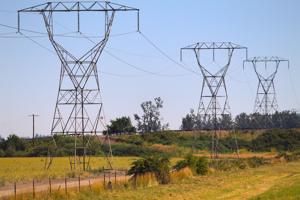Oregon Legislature passes 2040 benchmark for renewable electricity

(The Center Square) – Hours into a record heatwave, Oregon lawmakers passed a bill over the weekend accelerating Oregon’s aspiration to offer electricity entirely free of fossil fuels.
Seventeen U.S. states have passed statutory goals of transitioning their power grids to 100% renewable energy. Oregon wants to do so well before the middle of the century when most states expect to see success.
On paper, House Bill 2021 amounts to the state legislature’s most ambitious environmental legislation this session. If signed into law by Gov. Kate Brown, retail electricity providers would have to cut greenhouse gas emissions by 80% below baseline emissions levels by 2030, 90% by 2035, and 100% by 2040. In addition, it keeps the Oregon Energy Facility Siting Council from issuing permits for new energy facilities running on fossil fuels in most instances.
The 27-page bill provides $50 million in job training and apprenticeships outside the Portland metro area for women, veterans and disabled Oregonians in the renewable energy field. The bill also includes labor standards and benefits for renewable energy workers, which environmental and progressive groups support. The state Public Utility Commission would be obligated to report its recommendations to state lawmakers by 2022.
On Saturday, the bill cleared its last hurdle in the Senate, passing by a party-line vote of 16-12. The vote came as Salem hit 112 degrees Fahrenheit, breaking its prior heat record by four degrees. Democrats took the opportunity to blame the state’s energy supply for worsening climate change and a hot wildfire season.
“Look at the temperatures expected this weekend, and ongoing and prolonged drought,” said state Rep. Pam Marsh, D-Ashland, one of the bill’s primary supporters. “What I know when I look at that is if we fail to address the underlying conditions, we are just going to be back in this Capitol, year after year, trying to help communities out of disastrous situations.”
In 2019, 49% of Oregon’s utility-scale electricity came from hydroelectric power. Another 62% came from hydroelectric power plants and other renewable energy resources,
Weening the state off of fossil fuels has been on Oregon Democrats’ plan for years. However, it falls short of the loftier goals laid out in the cap and trade bill Gov. Kate Brown made law via executive order. A few critics testified the bill’s language needs work and could have afforded to fill a few loopholes.
Oregon Progressive Party Chair Dan Meek took issue with an amendment which would tolerate new fossil-fuel energy sites running on “Nonemitting electricity” or “electricity that is generated or stored in a manner that does not emit greenhouse gas into the atmosphere.”
“Say a coal-fired power plant produced electricity that is stored in a pumped storage reservoir,” Meek said. “That would qualify as ‘nonemitting electricity,’ because it is ‘stored in a manner that does not emit greenhouse gases into the atmosphere.'”
HB 2021 drew near-universal opposition from Oregon Republicans. They contend transitioning the state’s power grid so quickly could further strain it. State Rep. Lynn Findley, R-Vale, raised concerns this month land-use regulations could stall progress in gas-guzzling in Eastern Oregon.
“We should not be raising electricity costs for Oregonians while making our energy grid less reliable,” said House Minority Leader Christine Drazan, R-Canby. “We shouldn’t be pushing this through a closed-door legislative session and ignore serious concerns from the public and key stakeholders.”
Pacific Power and Portland General Electric (PGE) testified in favor of the bill this session. PGE is already committed to going 80% carbon-free by 2030. Lobbyists with the unity giant have expressed optimism 2040 is not an impossible date for a 100% threshold.
Both companies are banking on a so-called “cost cap” in the bill that lets utilities claim exemptions to HB 2021’s renewable energy goals if electricity rates rise by more than 6% in a year. That cost cap builds on “reliability pause” protections, which exempts utilities should they lack access to power from a given power source.
Environmentalists and utilities have shrugged off concerns of either happening but see those provisions as much-needed insurance.
The governor has 30 days under Oregon law to sign, veto or let HB 2021 become law.
Disclaimer: This content is distributed by The Center Square

